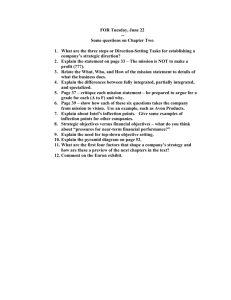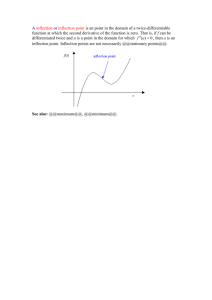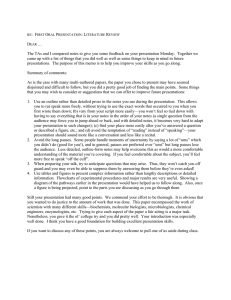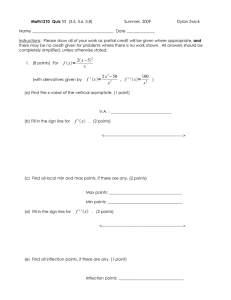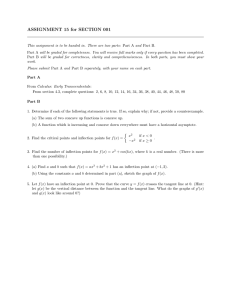Public Speaking Tip Sheet
advertisement
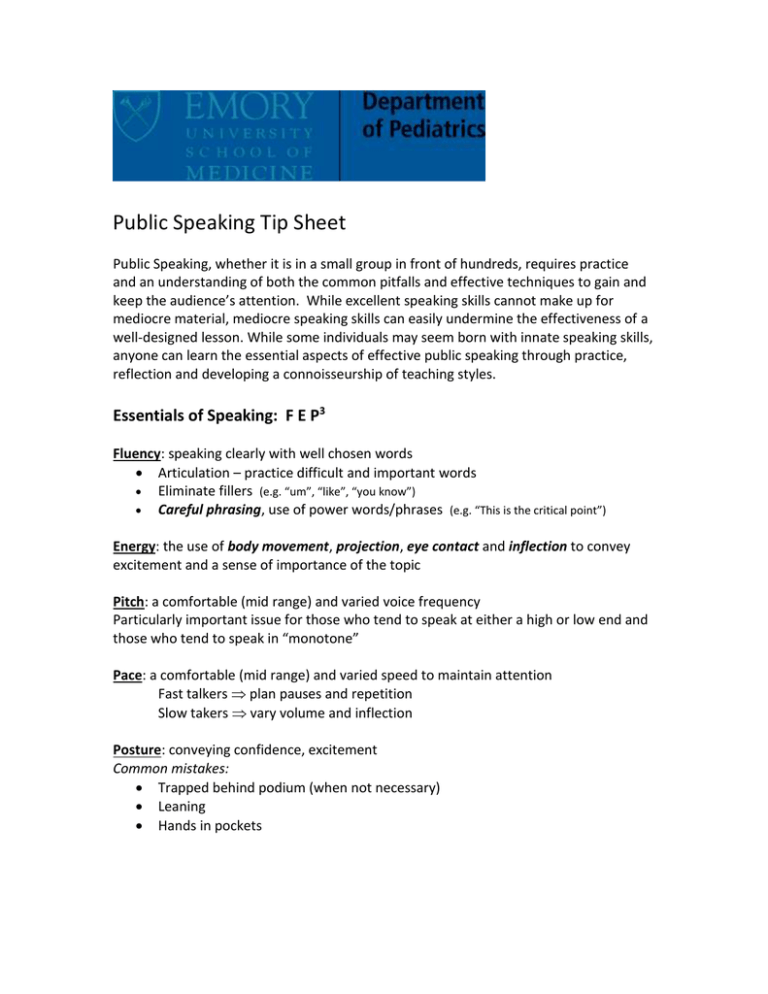
Public Speaking Tip Sheet Public Speaking, whether it is in a small group in front of hundreds, requires practice and an understanding of both the common pitfalls and effective techniques to gain and keep the audience’s attention. While excellent speaking skills cannot make up for mediocre material, mediocre speaking skills can easily undermine the effectiveness of a well-designed lesson. While some individuals may seem born with innate speaking skills, anyone can learn the essential aspects of effective public speaking through practice, reflection and developing a connoisseurship of teaching styles. Essentials of Speaking: F E P3 Fluency: speaking clearly with well chosen words Articulation – practice difficult and important words Eliminate fillers (e.g. “um”, “like”, “you know”) Careful phrasing, use of power words/phrases (e.g. “This is the critical point”) Energy: the use of body movement, projection, eye contact and inflection to convey excitement and a sense of importance of the topic Pitch: a comfortable (mid range) and varied voice frequency Particularly important issue for those who tend to speak at either a high or low end and those who tend to speak in “monotone” Pace: a comfortable (mid range) and varied speed to maintain attention Fast talkers plan pauses and repetition Slow takers vary volume and inflection Posture: conveying confidence, excitement Common mistakes: Trapped behind podium (when not necessary) Leaning Hands in pockets Keys to success: Practice – especially phrasing and inflection. Review recordings of your talks, seek objective feedback – identify weaknesses and make them your strength Incorporate rhetorical questions to keep the audience engaged Get comfortable with silence – pauses are useful Imagine you are having an animated conversation with a close friend Enthusiasm is contagious
